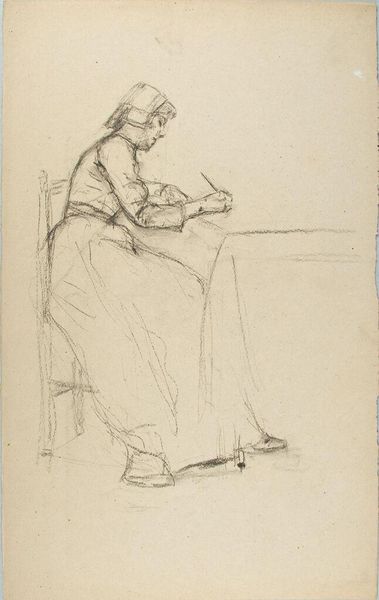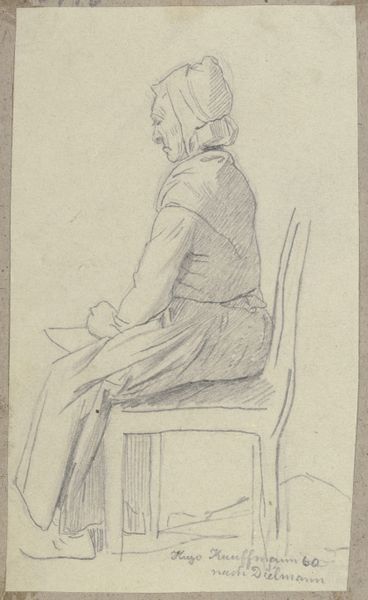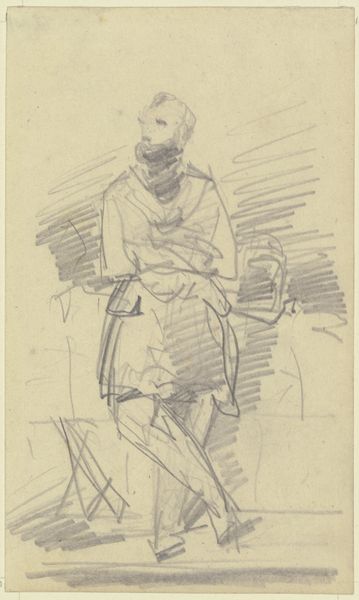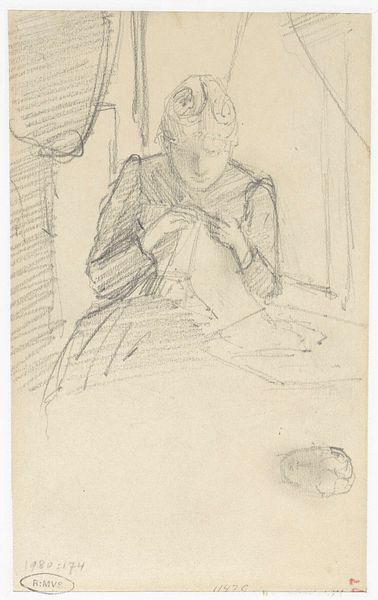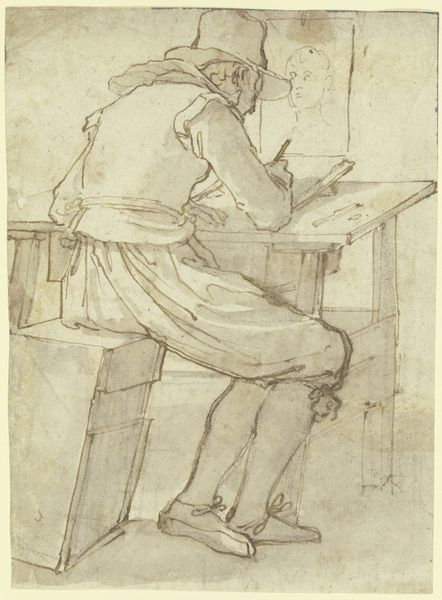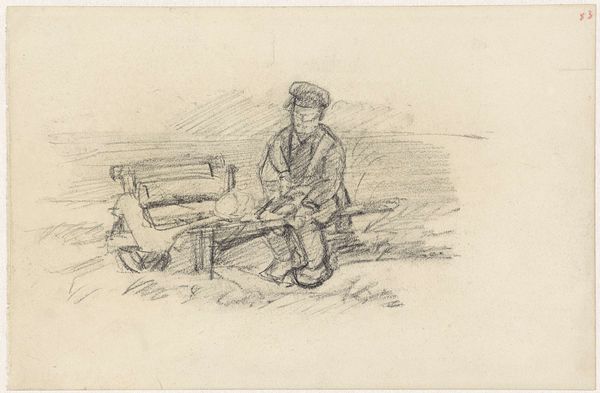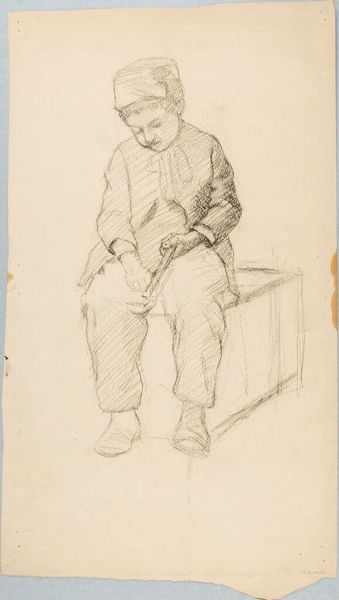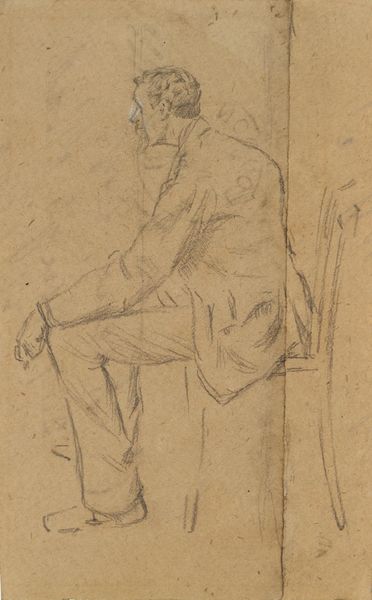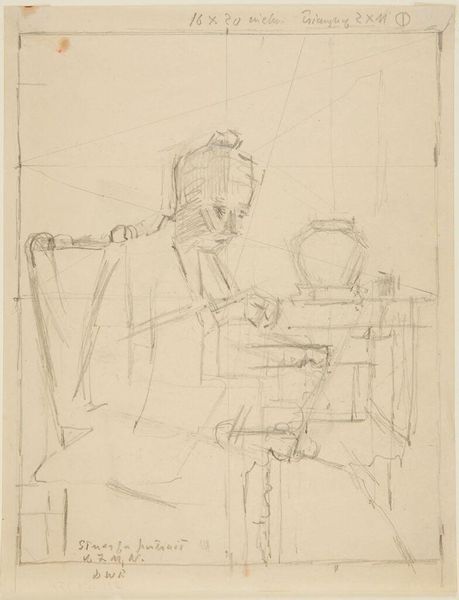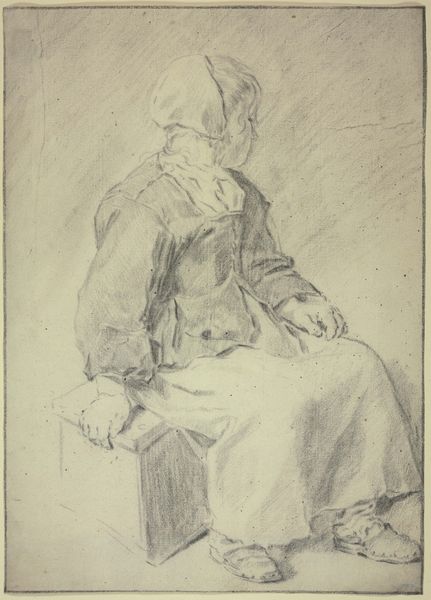
drawing, pencil
#
portrait
#
drawing
#
light pencil work
#
impressionism
#
pen sketch
#
cartoon sketch
#
personal sketchbook
#
idea generation sketch
#
ink drawing experimentation
#
pen-ink sketch
#
pencil
#
sketchbook drawing
#
genre-painting
#
storyboard and sketchbook work
#
sketchbook art
#
realism
Dimensions: height 307 mm, width 228 mm
Copyright: Rijks Museum: Open Domain
Editor: We're looking at "Spinnende Vrouw," or "Spinning Woman," by Anthon Gerhard Alexander van Rappard, likely created between 1868 and 1892. It's a pencil drawing, a simple sketch really. I'm struck by its everydayness. It feels very intimate, like a private glimpse into a domestic scene. What do you see in this piece? Curator: Well, immediately, I'm drawn to the social context it presents. Late 19th-century art was heavily engaged with representations of labor, especially that of working-class women. How do artists choose to portray such subjects? Do they reinforce or challenge existing social hierarchies? Van Rappard, friend to Van Gogh, participates in a broader discussion about rural life and its hardships, seen through a lens shaped by industrialization and urbanization. Editor: So, this drawing isn’t just a portrait; it's making a statement about women’s work? Curator: Absolutely. Consider the deliberate focus on this woman's hands. Labor – physical, repetitive labor – is central to the image. Ask yourself, who is this drawing *for*? Who is its intended audience, and what message is it conveying about the dignity or drudgery of work? Is it celebrating a traditional skill threatened by industrial advancements, or documenting a form of economic necessity? The fact it's a sketch makes me consider this was practice or a study towards a larger work, likely a painting to make a social comment. Editor: It’s interesting to consider that this sketch could have been made to depict certain class. It’s easy to look past these details, now that technology has replaced most physical labor. Curator: Exactly. Also, bear in mind how museums and galleries in that era were beginning to collect and display such works. What impact did the institutional framing of such images have on the broader public’s perception of the working class? It creates new meaning, doesn't it? Editor: Definitely, that's not something I initially considered. This has given me so much food for thought. Curator: The public role of art constantly shapes how we see ourselves and others; looking closely at a drawing like this can illuminate those power dynamics.
Comments
No comments
Be the first to comment and join the conversation on the ultimate creative platform.

